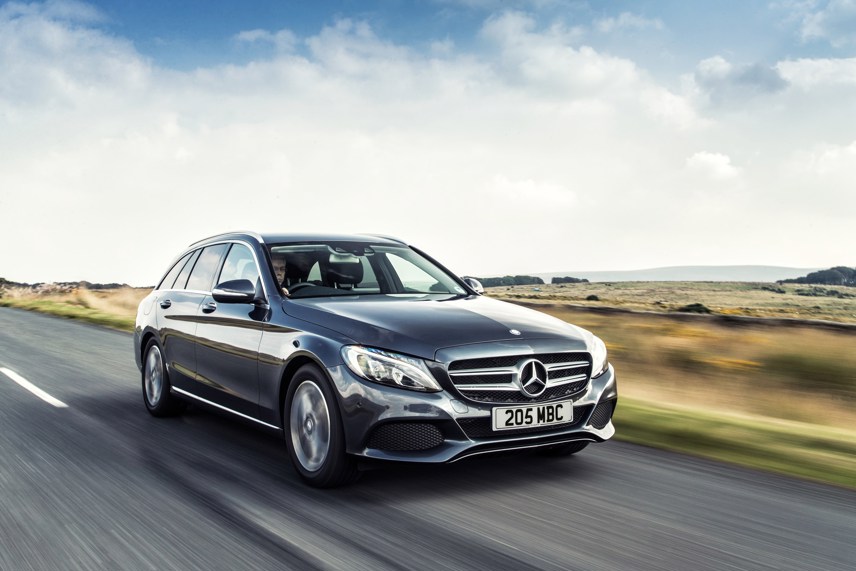Review
Estate cars have long been about more than just being able to carry huge amounts of cargo, with manufacturers increasingly placing greater emphasis on sleeker designs. Boxy vehicles with obviously cavernous boots are out; sharper-styled cars with seemingly less practicality are in.
The premium car sector probably typifies this best, with cars such as the Audi A4 Avant and the Mercedes-Benz C-Class estate – the vehicle on test here – arguably better looking than their saloon siblings.
Sharing its platform, interior and much of its exterior styling with its saloon counterpart, the C-Class’s rakish rear gives it a sophisticated, streamlined appearance while still providing significantly increased practicality over the four-door model.
With its rear seats in place, the estate can carry 490 litres of goods and, when folded, this rises to 1,510.
Both figures are competitive for the class: the A4 Avant offers 505 and 1,510 litres respectively, with the BMW 3 Series Touring providing 495 and 1,500.
However, for sheer cargo carrying capacity, all three trail the Volvo V70, which provides 575 litres with the rear seats in place and 1,600 with them folded.
The C-Class’s practicality is boosted by an electrically-powered tailgate and low boot lip which allows straightforward loading and unloading. Its rear seats fold down at the touch of a button to provide a completely flat load area.
The C-Class was named the best premium car in the 2015 Fleet News Awards, with judges praising the range for its class-leading interior quality, low emissions, frugality on fuel, and strong residual values.
Much of this still holds true, although its interior has now been surpassed by the A4 Avant’s. The C-Class’s cabin is not far behind, though, and still offers excellent build quality and a design which gives it a more upmarket feel than its German rival.
Performance of the C220 CDI Sport estate 7G-Tronic is also highly competitive. Its 2.1-litre diesel engine produces CO2 emissions of 114g/km and provides an official combined fuel economy of 64.2mpg. Its 170hp provides more than ample performance (0-62mph in 7.6 seconds) and is delivered to the wheels through a smooth-shifting seven-speed automatic gearbox.
Steering is well-weighted and exceptionally refined; the standard suspension provides a controlled and comfortable ride while excellent aerodynamics mean wind noise is barely audible. For those wanting limousine-like levels of comfort, Mercedes-Benz offers its Airmatic air suspension as an £895 option.
The C-Class provides a generous level of safety equipment. Standard kit on our test model, which has a five-star Euro NCAP rating, includes active bonnet, which detects an impact and raises the bonnet to reduce injuries to pedestrians, and collision prevention assist plus, which will brake the car automatically if it senses it is about to collide with a vehicle in front. Optional additions include the driving assistance package (£1,495) which features blindspot assist, lane-keeping assist and pre-safe anticipatory safety system, which can sense when a collision might be imminent and prepare for it by tightening seatbelts, adjusting the front head restraints and even closing the windows.
The package also includes Distronic Plus, which allows the car to follow traffic flow at speeds of up to 40mph with no driver input.



















